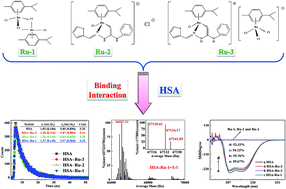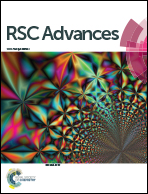In vitro interaction investigation between three Ru(ii) arene complexes and human serum albumin: structural influences†
Abstract
Ru(II) arene complex-based anticancer drugs have attracted great attention in biomedical and pharmacological areas. The investigation of structural influences helps in understanding biological effects and in contributing to the development of new drugs. The study of protein–drug interactions is very important for understanding the mechanism behind the bioactivities of drugs. To examine the potential of Ru(II) arene complexes as therapeutics, we systematically investigated the structural influences of three Ru(II) arene complexes (Ru-1, Ru-2, and Ru-3) based on their in vitro interaction with human serum albumin (HSA) by multi-spectroscopic methods. The binding interactions of three drugs with HSA results in the formation of three HSA–drug complexes, and van der Waals forces and hydrogen bonding played major roles in stabilizing these complexes. The changes of micro-environments and conformations of HSA were significant and the biological activity of HSA was weakened when present in the three drugs. We found that a number of Ru(II) arene groups and space steric hindrance were responsible for the differences in the in vitro interactions between different Ru(II) arene complexes and HSA. Our results together provide further molecular level understanding of binding interactions of protein with Ru(II) arene complexes and a strategy for the research of structural influences.


 Please wait while we load your content...
Please wait while we load your content...